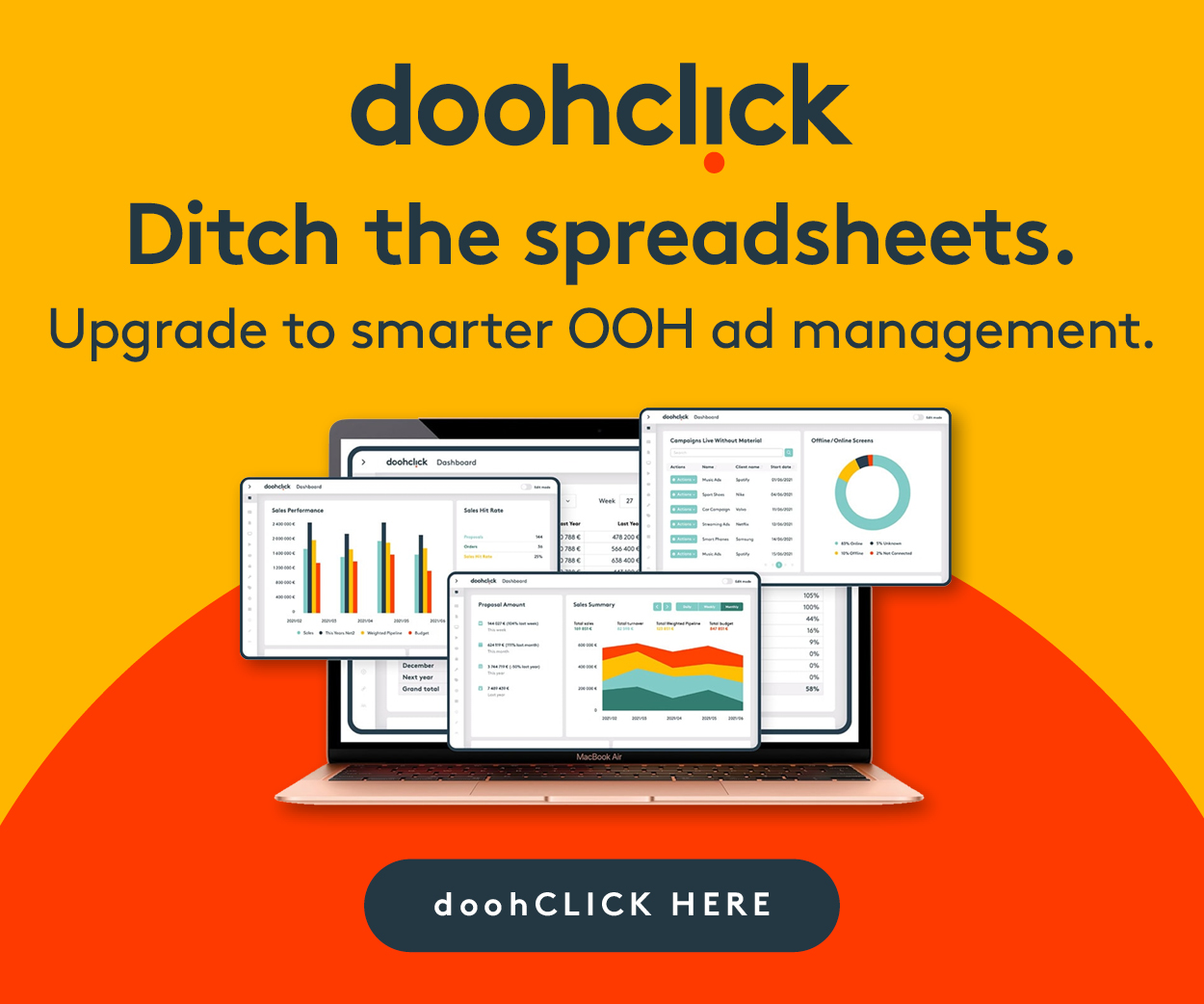Gail Chiasson, North American Editor
Having had a short chat yesterday (Oct. 14, 2015) with Helma Larkin, CEO, Posterscope USA, New York, I have no doubt that she’ll be able to get her points across and more than hold her own during the upcoming Great Debate during the Digital Place-based Advertising Association’s upcoming #VideoEverywhere Summit Nov. 3/15 during New York Digital Signage Week.
 Larkin will be one of four panelists arguing on the ponderous sounding debate topic: ‘Video advertising should be treated screen agnostically and valued equally, whether it is viewed on a tablet, smart phone, PC, TV, DPb screen or other device – To viewers, the screen doesn’t matter.’ – let’s hope that the topic title doesn’t have to be repeated more than once, or it will encroach heavily on the 45 minutes allotted to the debaters in total!, Ed.
Larkin will be one of four panelists arguing on the ponderous sounding debate topic: ‘Video advertising should be treated screen agnostically and valued equally, whether it is viewed on a tablet, smart phone, PC, TV, DPb screen or other device – To viewers, the screen doesn’t matter.’ – let’s hope that the topic title doesn’t have to be repeated more than once, or it will encroach heavily on the 45 minutes allotted to the debaters in total!, Ed.
Larkin is one smart lady, with a strong background in finance, mergers & acquisitions with such companies as the Dentsu Aegis Network and earlier with PricewaterhouseCoopers in the US and KPMG in Ireland and Italy.
Arguing on a heavyweight panel that also includes David Poltrak, chief research officer, CBS Corp. and president, CBS VISION; Kris Magel, chief investment officer, Initiative; and Steven Wolfe Pereira, vice-president brand strategy and marketing solutions, Oracle (and moderated by Dave Morgan, CEO and founder, Simulmedia), Larkin said that she’ll be looking at the importance of audiences rather than the location.
“Statistics show that, more than ever, people are out of home and that true mobile phone interaction offers the opportunity to follow the consumer across mobile, tablet, digital out-of-home screen, addressable TV and more,” she said. “We work programmatically, but however the buy, I have to say that the future of OOH and DOOH is based on audience.”
Citing Posterscope’s proprietary consumer insights global panel (OCS). Larkin explained how it is used for accessing not only age groups but detailed specifics such as, eg. males, age 35-45, commuting from home, buying luxury cars, working on Wall St. and earning a specific salary.
“That way, we know that they’ll be on their mobile phones and tablets at home, that they’ll pass DOOH boards on their way to the office, take screen-equipped elevators in their office buildings, the places that they are likely to eat, and more. We can then follow them with a media buy that covers everywhere they’ll be.” In other words, the targeted group is being hit with the same messages (although the creative may vary) on all types and sizes of screens constantly and consistently.
Another subject Larkin is sure to bring into her argument is the use of data to drive an efficient use of all media.
“There’s a great opportunity to use data and to show how investing in new data knowledge can also be efficient in helping to reach the consumer, regardless of the screen,” she said. “The use of data, content and creative is as important as the screens themselves.” We expect that, in this regard, Larkin will discuss sports fantasy game companies FanDuel and DraftKings and their different media approaches and calls to action.
“It’s the moment that matters most: the where and when that the person is most receptive to a message,” she said. “And there are techniques for following the consumer to each device. Research companies are increasing their ways to track and measure so that you can hit the consumer and reiterate the message over and over and close the loop.”
And while media planners are using location-based data and programmatic buying focused on targeting consumers, Larkin said that they still often need convincing about the measurability and effectiveness of the digital screen in reaching them.




Follow DailyDOOH